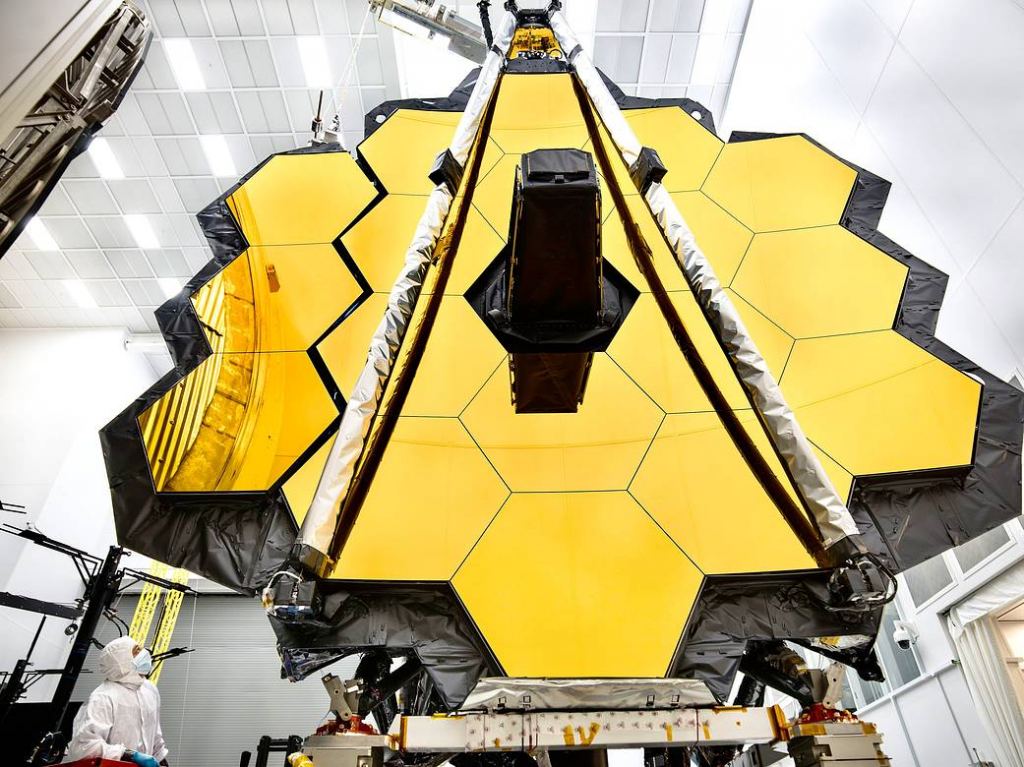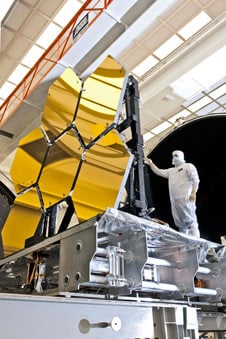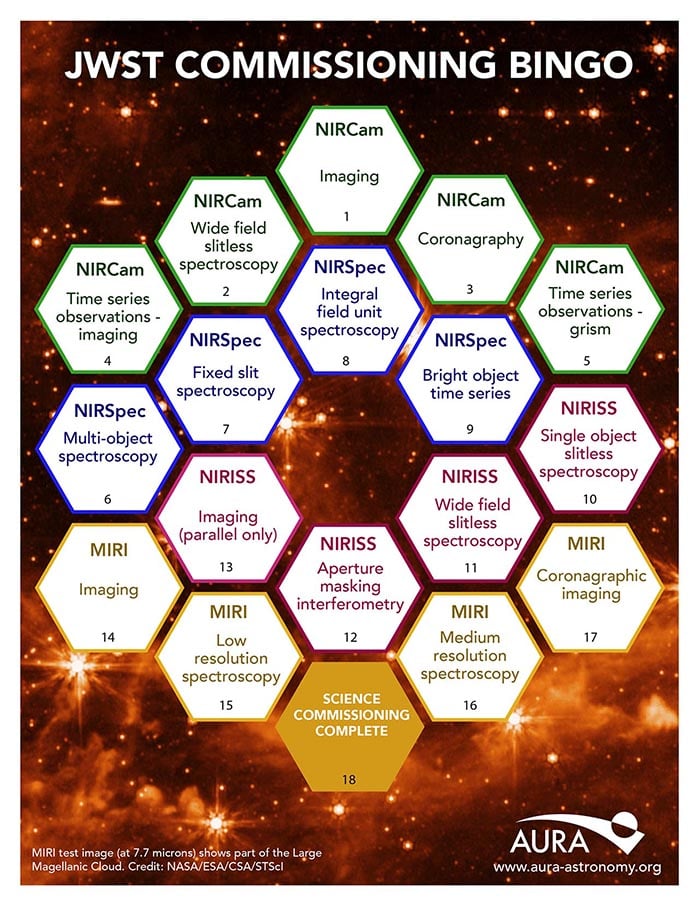Scientists and engineers for the James Webb Space Telescope revealed that since its deployment in space, the telescope has been struck at least five times by micrometeroids, with one recent strike by an object that was larger than what pre-launch models suggested that the telescope would likely encounter.
In a NASA blog post, JWST team members said that sometime between May 23 and May 25, one of the primary mirror segments sustained the larger impact, with a noticeable effect on the mirror segment's performance. However, after initial assessments, the team found the telescope is still performing at a level that exceeds all mission requirements despite a marginally detectable effect in the data.
"With Webb's mirrors exposed to space, we expected that occasional micrometeoroid impacts would gracefully degrade telescope performance over time," said Lee Feinberg, Webb optical telescope element manager at NASA Goddard. "Since launch, we have had four smaller measurable micrometeoroid strikes that were consistent with expectations and this one more recently that is larger than our degradation predictions assumed. We will use this flight data to update our analysis of performance over time and also develop operational approaches to assure we maximize the imaging performance of Webb to the best extent possible for many years to come."
The team said this most recent hit was not a result of a meteor shower and is currently considered an unavoidable chance event. On Twitter, Mark McCaughrean, the European Space Agency's Senior Advisor for Science & Exploration and part of JWST's Science Working Group, said the exact size of the object is not known. "I think: it's hard to get a handle on the size without knowing the velocity. But to be clear, we're talking about small bits of dust at best, not rocks."
Meteoroid impacts are a known hazard of space flight and the telescope team has always known that impacts will occur throughout the entirety of JWST's lifetime in space. On Twitter, Feinberg said that with a 25 square meter primary mirror and large sun shield, "Webb will be hit by many of varying size. Knowing this, we built Webb with large margins."
The mirror segments were engineered to withstand bombardment from the known micrometeoroid environment (other spacecraft have been in orbit at the second Lagrange point L2), with dust particles flying at extreme velocities. During the telescope's construction, engineers used a mixture of simulations and actual test impacts on mirror samples to get data on how to fortify the observatory for operation in space.
And JWST has one thing other space telescopes don't have: the ability to adjust the mirror segments to within microns of precision. The team said that with the capability to sense and adjust mirror positions enables partial correction for the result of impacts.
"By adjusting the position of the affected segment, engineers can cancel out a portion of the distortion," wrote JWST media team member Thaddeus Cesari. "This minimizes the effect of any impact, although not all of the degradation can be cancelled out this way. Engineers have already performed a first such adjustment for the recently affected segment C3, and additional planned mirror adjustments will continue to fine tune this correction. These steps will be repeated when needed in response to future events as part of the monitoring and maintenance of the telescope throughout the mission."
The flight team can also perform protective maneuvers that intentionally turn the optics away from known meteor showers before they are set to occur. And now, as a result of this impact, a specialized team of engineers has been formed to look at ways to mitigate the effects of further micrometeoroid hits of this scale. Over time, the team will likely be able to better predict such impacts and how they will affect the telescope's performance, as well as getting a handle on the dust particle environment at L2, for both JWST's mission and future missions that will orbit there. They are also working with micrometeoroid prediction experts at NASA's Marshall Space Flight Center.
So while such impact events were anticipated, as an outside observer, it is jarring to realize how frequently JWST might endure impacts. After all the worries about the telescope's launch, and all the precise delicate operations that had to go perfectly for the telescope's deployment and alignment, it 'hits home,' (so to speak) that JWST really in in a harsh, unforgiving environment. But as the team reassured, Webb's beginning-of-life performance is still well above expectations, and the observatory is fully capable of performing the science it was designed to achieve. Additionally, things are still on track for the first observational images to be released in July.
In the meantime, commissioning of the telescope is ongoing, with about 16 steps remaining for a fully functional telescope (NIRCam is the first to be commissioned). You can follow along with the steps at NASA’s Deployment Explorer website, which will monitor when each mode has been verified. The order in which the modes are being commissioned is not available, but the team at the Association of Universities for Research in Astronomy (AURA) has put together a JWST Bingo sheet to see all the steps required in this final phase of commissioning.
 Universe Today
Universe Today



